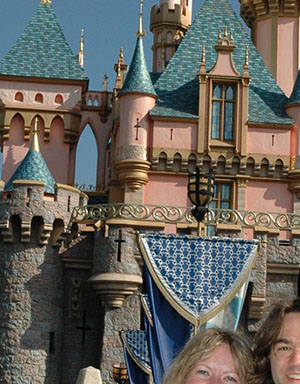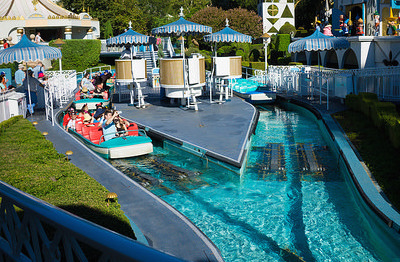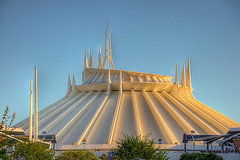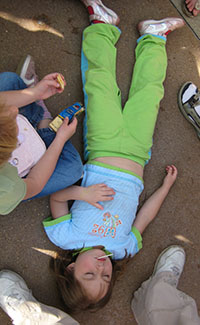This summer our family took a vacation in southern California, and we had a fun excursion to the Disney theme parks. What I particularly enjoy about Disney’s parks, apart from the technically impressive rides themselves, is the attention to detail for the whole experience from the moment you enter the park to the time you leave. You can see little details in everything from the escalators in the parking garage to the storefront facades to the activities in line. And one of the most notable features is the Fastpass option.
For those who have not yet experienced it yet, Fastpass is a free service in the Disney parks that allows you to skip to the front of the line on many of the popular rides. The way it works is you go to a machine and get a ticket that tells you to come back at a certain time. When you come back in that time window, you get to walk right up to the front of the line.
Fastpass is of course great when you are using it. But what I find really interesting about Fastpass is that it can make your wait shorter even if you don’t use it.
Huh? How can people cutting in front of you in line make your wait shorter? To understand that, let’s back up and take a look at the general queuing process.
Just Make It Faster
Needless to say, Disneyland is a pretty popular place. Tens of thousands of guests visit the parks each day, and most will want to ride each of the major attractions. It takes time to feed all these people through the ride, and that means we wait. So, how can the wait time be reduced?
With some brainstorming, we can think up several ways to speed up an attraction’s line. The most direct mechanism is to feed people into the ride faster, and Disney has been a leader in designing rides that can feed guests quickly. Most rides have larger than normal cars with lots of seats to maximize the number of people sent each time. Every ride has multiple cars going at the same time packed as close as possible to maintain safety. To continually feed cars through the ride at the maximum rate, each loading dock features mechanisms to load riders in multiple cars at the same time. Many rides even feature a mechanism to move a car out of the queue so something like a seat belt jam won’t hold up the ride. While you are waiting to get on, take a good look at the mechanisms. It’s fascinating.
So once the ride has been designed to maximize the speed, what else can we do? Well, you could make the wait in the line more enjoyable. The lines of many rides feature elaborate themed decorations, animatronics, video clips, and activities. None of these features will make the wait actually go faster, but they will make it seem faster.
Once the ride has been designed to its extreme, what else can be done? What if you could convince some of the guests to wait longer to allow everyone else to get on faster?
The Slow Lane
Let’s work with an example to make things easier. Say that the Space Mountain ride at a given time has a 1 hour wait. You are an imagineer that wants to make the line shorter. To do so, you make a second, slower line. For every 10 people you let on from the original line you let on 1 person from the slow line. Clearly, if you move people from the original line to the slow line, the original line will go even faster. You figure that if you can convince 30% of the people to wait about 3 and a half hours in the slow line, the people remaining in the original line would only have to wait about 45 minutes instead of an hour.
The question is, how do you get people to agree to wait in a longer line?
Incentivizing a Longer Wait
Obviously, no one is going to choose a line with a longer wait simply to wait longer. It is also unacceptable to force some patrons to wait longer than others. Instead, you have to convince a significant portion of riders to wait in the longer line.
One obvious way to do this is to pay money to anyone agreeing to wait in the slow line. If you offered, say $20, to anyone who chooses the slow line, many will take you up on it. Disney, of course, choose not to do this, but many other amusement parks do. Sort of. Many parks now offer a premium “VIP ticket” or some equivalent that gives you expedited entry to rides. Charging more for the fast line or giving money for the slow lane are essentially the same although the practice of reaping added fees at the expense of other patrons feels a bit more unpalatable.
But people are motivated by things other than money. What else can you offer to convince people to wait longer? You could make the wait more pleasurable. Rather than standing relatively still in line with nothing else to do, what if patrons were allowed to do something else that they were planning to do anyway? If someone agrees to wait in the slow lane, you could offer to hold their place in line. While you hold their place, they can go have a meal, browse the shopping areas, or visit less busy rides.
This is exactly what Disney is doing. They gave this slow line the ironic name “Fastpass” and the original line “standby.” As people decide to use the Fastpass line, they bleed off the standby line and make the latter actually go faster.
Seriously, Does Fastpass Actually Make Standby Faster?
Well… although I’ve just shown how Fastpass can make standby faster, at least in theory, I’ve ignored several behaviors that work to make the lines longer again. Most importantly, Fastpass owners are not going to sit around the park. Rather, many will spend that time waiting in other standby lines (and vice versa) with a net effect of fewer people actually leaving the standby lines.
Then again, some portion will never return to get on the ride. (I personally have gotten several Fastpasses that I ended up not using for a variety of reasons.) These are essentially people that have left the standby line and choose never to ride at all.
Even if Fastpass is effective in reducing the standby wait time, the shorter wait time itself will encourage more people to wait in line, bringing the wait time up again. Line wait times probably have a tendency to balance themselves out.
Ultimately all this means that more people will be able to enjoy their ride experience. You have to appreciate what a clever system this is to give patrons a chance to experience short wait times (even though the wait time is in reality longer) without really negatively affecting other wait times.





